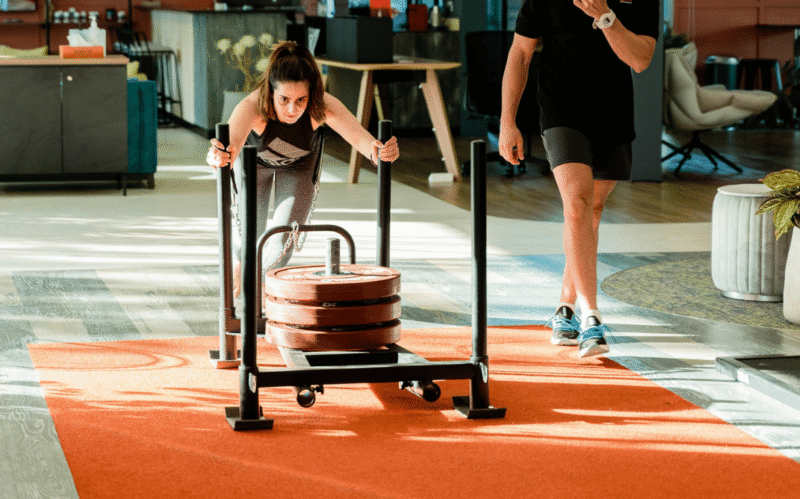From Lab to Field: Reflections on the New "Time-to-Zero" Feature
|
Hello Reader, The integration of sport science with cutting-edge technology never ceases to amaze me. As I reflect on the latest update to the Athletica Workout Reserve—the “Time-to-Zero” feature—I’m struck by just how far we’ve come. This feature, now available on Garmin devices via our app, brings an unprecedented level of precision and practicality to endurance athletes worldwide. To fully appreciate its significance, I’d like to share a bit about my journey with “time-to-exhaustion” (TTE) research and how this new development revolutionizes what we once labored to uncover in the lab. Revisiting Time-to-Exhaustion ResearchIn my earlier academic career, my colleagues and I explored the reliability of TTE tests compared to time trials (TTs). Our 2007 study in Medicine & Science in Sports & Exercise highlighted the inherent variability in TTE tests. While TTs—such as a 5-km run—proved relatively reliable, TTE tests, where athletes are asked to sustain a fixed intensity until exhaustion, exhibited significantly greater variability. Despite these challenges, we demonstrated that TTE results could predict TT performance with reasonable accuracy through advanced modelling techniques. At the time, conducting these tests required meticulous planning, sophisticated laboratory equipment, and highly controlled environments. Athletes had to endure grueling treadmill sessions while researchers like me monitored their every move. It was insightful yet labor-intensive work—a far cry from the simplicity athletes experience today. The "Time-to-Zero" Leap ForwardFast forward to today. With the introduction of the “Time-to-Zero” feature in the Athletica Workout Reserve, we’ve essentially brought the laboratory into the field. Athletes no longer need to guess how long they can sustain a given pace or power. Based on their Athletica training history and real-time performance data, the “Time-to-Zero” metric calculates, with remarkable precision, how long they can continue before reaching exhaustion (or their personal best effort). This breakthrough is powered by advanced mathematical modelling and seamless integration with Garmin devices. The once-complex calculations are now processed in real-time, delivering actionable insights directly to your watch or cycling computer. The brilliance behind this innovation is the mathematical genius of Andrea Zignoli and Phil Whitehurst, whose expertise and creative problem-solving turned an ambitious idea into a transformative tool for athletes. For me, this is nothing short of revolutionary. It democratizes access to high-level performance insights, removing barriers and empowering athletes at every level. The Sport Science Lab, RedefinedWhat’s most striking is how this technology represents the evolution of sport science. In the past, conducting a TTE test required a full lab setup. Today, that same level of insight is available—and arguably even more accurate—on a device you wear on your wrist. It’s a testament to the power of innovation and collaboration within the fields of sport science and technology. Practical Implications for Athletes and CoachesThe practical applications of the “Time-to-Zero” feature are vast. For endurance athletes, it’s a game-changer for pacing strategies. Cyclists can use it to optimize their power output during a time trial, while runners can gauge whether they’re on track to finish strong in a race. Coaches can leverage the data to design training sessions that push athletes to their limits without overreaching. It also serves as a vital tool for monitoring recovery, ensuring athletes are progressing sustainably toward their goals. Acknowledging the JourneyReflecting on the evolution from our lab-based TTE tests to the real-time, field-ready “Time-to-Zero” feature, I’m filled with awe and gratitude. This journey underscores the power of persistence, collaboration, and innovation. It’s a reminder that the challenges we face today often pave the way for groundbreaking solutions tomorrow. To those using the Athletica Workout Reserve and the “Time-to-Zero” feature: You are now equipped with tools that were once the stuff of dreams for researchers and coaches. Embrace them, use them wisely, and let them guide you toward new personal bests.
Paul Laursen, PhD |
Athletica AI Coach and Training Science
Smarter training starts here. Athletica’s newsletters deliver science-backed insights, expert tips, and AI-powered training updates for endurance athletes of all levels. Catch up on past editions and subscribe to stay ahead in your training journey.
Hello Reader, I wanted to share a quick story and a new release I’m really proud of. Years ago, when Kyle Buckingham crossed the line first at Ironman South Africa, he reflected later and said to me: “Paul—I know you’re trained as a physiologist, but really, you’re more of a psychologist.” Kyle Buckingham: The Sweetest Victory at his Home Race – Ironman South Africa It made me smile. Andi Boecherer once told me almost exactly the same thing after winning Ironman Lanzarote. It took me back to...
The Catalyst —My 36-Hour Fasted Climb A few weeks ago I finished recording a podcast with Prof. Tim Noakes and Dr. Phil Maffetone—two mentors whose work underpins much of my own coaching. Inspired (and a little rattled) by their latest thinking on the importance (or lack thereof) of muscle glycogen, I tested my own beliefs in the subsequent days: Fed vs. 36 hours fasted (black coffee + water). 90-min climb up Mt Revelstoke. Result: Personal-best power with –13 % Athletica Workout Reserve. One...
Hello Reader, We’re genuinely pumped about this release. One year ago HYROX wasn’t even on our radar—until our colleague Dan Plews (HYROX World Champion & HIIT Science contributor) sat down with Martin Buchheit on the Training Science Podcast. The forum lit up. “Can Athletica build an adaptive HYROX plan?” Today—we’ve delivered. What is HYROX, anyway? HYROX has rocketed from just 650 pioneering athletes in 2017 to roughly half a million competitors across five continents in the 2024-25...

